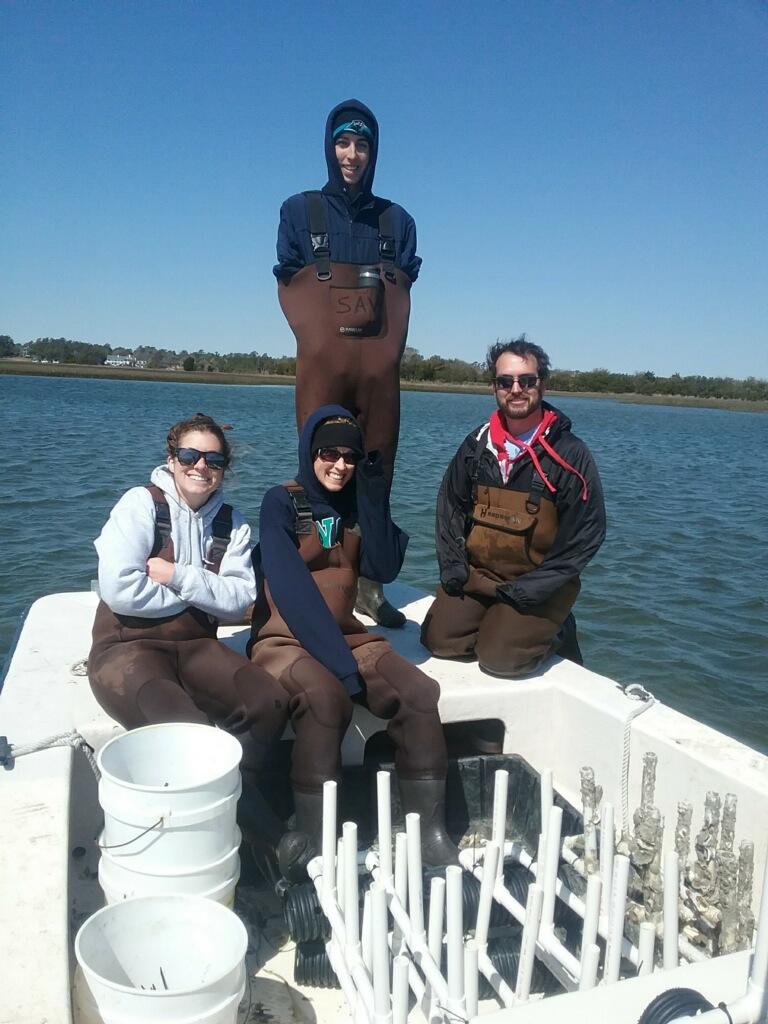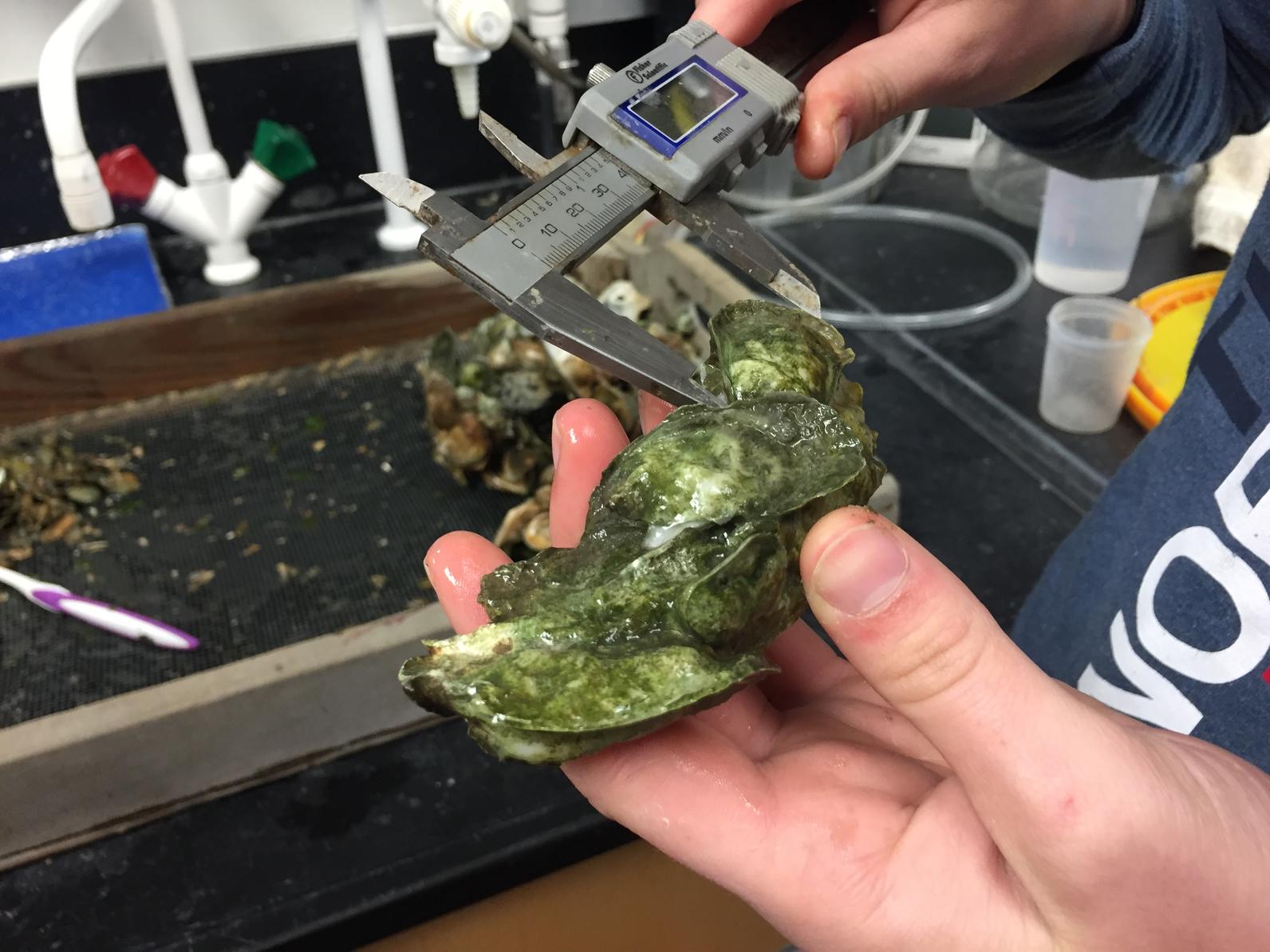Alexis Marti is a master’s student at UNC-W. She is working with her advisor, Troy Alphin, to assess oyster health on the Lower Cape Fear River as part of Audubon North Carolina’s oyster reef enhancement project.
When working in academia, it is oftentimes difficult to see the effects of your work past the interpretation of the results; we tend to get stuck on the small details and fail to see the application of the research.
As a student working towards my degree in Marine Science, it has been incredible to see the collaboration of a nonprofit organization, a university, and an environmental consulting group come together to work on saving the American Oystercatcher population in our backyard—the Lower Cape Fear River. Oystercatchers use oyster reefs for their food source, therefore a decline in the oyster population could lead to a decline in oystercatchers. My portion of this collaborative project focuses on assessing the health and abundance of the current oyster population in the river to provide information on determining suitable areas to establish new oyster habitat.
To evaluate the health of the current oyster population, we have done several field studies. These field studies require a lot of help and would not be possible without the vast number of undergraduate volunteers in our research lab that spend their free time dredging through the mud and muck to help with these projects.

Our first assessment of oyster abundance was through a process called “excavating,” where we randomly select 0.25 x 0.25m2 plots on a reef and count the number of oysters and associated fauna (i.e. mussels, mud crabs, snails, etc.). This method helps us determine the health of the reef by estimating the amount of both oysters and associated fauna, which are a potential food source for the oystercatcher.
Our second field study assessed the health of individual oysters on the reef through a process called “conditioning.” Conditioning is an index that is used to assess how changes in the environment affect oyster health. Conditioning is a time-consuming process that involves bringing back oysters from the field, weighing them almost immediately, and then shucking them to determine the wet and dry weight of their tissues compared to the internal shell volume. This information relates to the “condition” or health of the oysters.

The third ongoing study is looking at the growth and mortality of oysters on the reefs. We are completing this portion of the study through use of deployment trays—a metal tray that we camouflaged into the reef and filled with tagged oysters that have been measured. In a few months, we will return to the reefs and look through the trays, re-measure the tagged oysters (to look at their growth), and determine which oysters (if any) have survived. By using both oysters in a cluster and individuals (single oysters), we can get a sense of oyster predation by the oystercatchers. This is important, because it would not be good if oystercatchers ate all of the oysters at a site where we were attempting to enhance or establish an oyster reef.
Very soon we will be determining spat (baby oyster) settlement using a PVC rack containing ceramic tiles. Oysters need a hard substrate to settle on, so we use these ceramic tiles imitate to that. Wave energy due to the large fetch (areas of open water) around the study sites is a factor that may limit the settlement of oysters on some of the smaller dredge islands in the river where oystercatchers roost and nest. While there are several potential sites for the addition of oyster reefs in the river, oyster settlement is the determining factor for oyster reef enhancement. If these islands are capable of maintaining oyster reefs, our hope is that the spat settlement will show us if they are limited by a lack of substrate to grow on, rather than by wave energy or other reasons. If this is the case, the site could be a good candidate for enhancement.
Our goal with this project is to determine the current abundance and health of oysters in the river and to assess the suitability of potential sites for future oyster reefs that can be created and used by oystercatchers as a food source. Our hope is that an increase in the oyster population will support an increase in oystercatcher chick survival because their parents will have more and better access to food for them.
As the project continues, I look forward to seeing the interaction between our field assessments and the evaluations from the other collaborators. In closing while my favorite thing to do after shucking an oyster is eating it, none of the oysters in my work are consumed; we’ll leave that to the oystercatcher experts.




